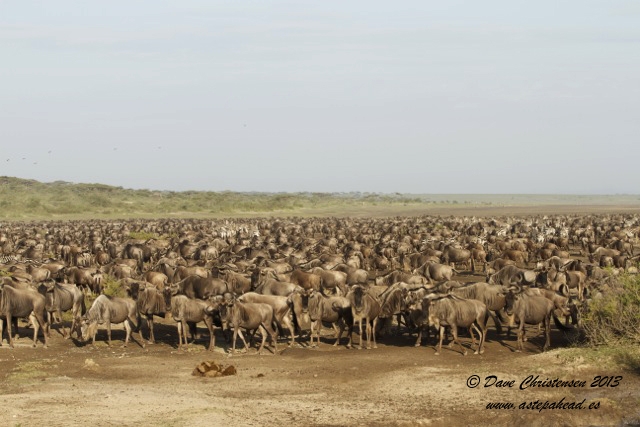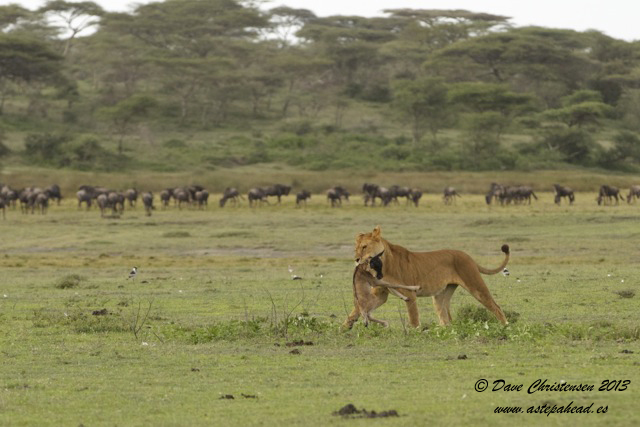The wildebeest migration was in full swing, with animals moving every couple of days because the lack of rain was forcing them to look for grazing and water.
This amount of herbivores together provide a glut of food for predators, who hunt both day and night. As it was the onset of the wildebeest calving period, the first few early calves were the main targets for predators looking for a meal.
Females who moved away from the group to give birth were selected and much easier to catch than many other individuals in the herds.
Because of the erratic rainfall, many pregnant wildebeest cows hung on until conditions improved. This meant that there were not yet that many wildebeest calves around and predators like cheetah were still battling it out trying to hunt Thompson’s gazelle…. with a large element of success nonetheless. Their time of easier meals was still to come.
Although it is often hard to watch, these are natural population controls. A slow death through thirst or starvation would be much more difficult to watch or bear.
Dave





